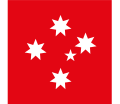History
First incarnation
The first Paddington Ward was established with the creation of the City of Brisbane, and was one of the original 20 wards contested at the 1925 Brisbane City Council election. [3] The ward was created using the boundaries of the Electoral district of Paddington, as the city originally defined its wards on the state electoral districts that were fully or partially within its boundaries. [3]
John Fihelly of the Labor Party was elected at the 1925 election as the ward's first alderman., [5] and was re-elected at the 1928 election. [6] Bill Power succeeded Fihelly for the Labor Party at the 1931 election.
Though a reduction in state districts ahead of the 1932 Queensland state election saw the Electoral district of Paddington]] abolished, [7] Paddington Ward was retained for the 1934 Brisbane election as the city still required 20 wards. [8] However, as the city needed 20 wards, Paddington Ward was retained for the 1934 council election. [9] Power was re-elected for the ward at the 1934 election.
As part of the redistribution prior to the 1935 Queensland state election, a new Electoral district of Baroona was established in a similar region to the abolished district of Paddington. Incumbent alderman Bill Power contested the new district at the 1935 election, and vacated the ward upon his election to the Legislative Assembly. Walter Russell Crampton was appointed to the casual vacancy. [10]
Following the state redistribution, the City of Brisbane returned to defining its wards on state district boundaries; abolishing Paddington Ward and establishing Baroona Ward for the 1937 Brisbane election. [11] Crampton successfully contested the new ward, and served as its alderman until his death in 1938. [10]
Second incarnation
The second Paddington Ward was established for the 1985 election as part of an increase from 21 to 26 wards. [4] It was created from the northern half of the abolished Auchenflower Ward and the western edge of the abolished Central City Ward. The ward covered the present suburbs of Milton, Paddington, Petrie Terrace, and Red Hill; almost all of Auchenflower and Bardon; and parts of Ashgrove, Brisbane City, Kelvin Grove, Newmarket, and Toowong. [4]
The ward was won by the Labor Party at the 1985 election, and retained at the 1988 election. [12] Helen Abrahams was elected at the 1991 election, retaining the ward again for the Labor Party. [12] [13]
The ward was abolished for the 1994 election, with its area split between the new Central Ward and the second incarnation of Toowong Ward.
Third incarnation
The second Toowong Ward was abolished ahead of the 2016 election after successive redistributions had seen it lose most of Toowong to Walter Taylor Ward. [14] [15] The third incarnation of Paddington Ward was established slightly further north, taking in much of the abolished ward's area. Incumbent Toowong Ward councillor, Peter Matic, successfully contested the new ward for the Liberal National Party at the 2016 election. [14] Matic narrowly retained the ward at the 2020 election. [15]
In March 2023, Matic announced he would not re-contest the ward at the 2024 election and that he would step down prior to the election, allowing for a successor to be appointed to the vacancy. [16] Clare Jenkinson was confirmed as his successor in June 2023, and was officially oppointed on 22 June 2023. [17] [16]
At the 2024 election, Seal Chong Wah won the ward for the Queensland Greens, narrowly defeating Jenkinson as the incumbent. [18] Chong Wah's election gave the Queensland Greens a second councillor in the City of Brisbane; having also held The Gabba Ward since 2016.
This page is based on this
Wikipedia article Text is available under the
CC BY-SA 4.0 license; additional terms may apply.
Images, videos and audio are available under their respective licenses.





